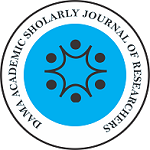Authors: Karno1, Beny Suyanto2, Hery Koesmantoro3
1,2&3Department of Environmental Health, Health Polytechnic of Ministry of Health in Surabaya, Indonesia
Abstract
Human urine as a result of the human body’s metabolic process is a human liquid wastes that are not considered useful and presence in the environment which causes the odor, and disturbs aesthetics. By using appropriate technology, urine can be used as raw material for Liquid Organic Fertilizer (Pupuk Organik Cair (POC)) that is environmentally friendly and can be used for agriculture. The research objective is to identify and analyze the characteristics of human urine, with aeration and fermentation process in the manufacture of Liquid Organic Fertilizer (POC). The type of this research was an action research with the raw material of human urine, bacteria fermenter (EM-4) and glucose which were processed by treatment of aeration and fermentation with parameters of Nitrogen (N), phosphorus (P) and potassium (K). The results showed the content of nitrogen before treatment (0.14%) and after treatment, it increased after 7 days (0.2%), 14 days (0.28%) and 21 days (0.29%). The usage of EM-4 that contained nitrogen-fixing bacteria in the maturation process of human urine POC (Urma) greatly helped an increase the content of nitrogen (Lartansuphaphol, 2009). Meanwhile, the content of phosphorus 0.17% before treatment and 7 days after treatment (0.03%), 14 days (0.01%) and 21 days (0.07%) showed the rate of decline. Decrease in phosphorus content during the fermentation process was occurred because the phosphorus in the phosphate salts as nutrients macro nutrients was required for bacterial growth (ningrum, F, gems, 2012). Decline was also due to the binding of phosphorus by microorganisms that derived from bio-activator of EM-4 when fermentation (Directorate General of SME, 2007). The content of potassium urma was 1.3% before treatment and (1.59%) After 7 days treatment, 14 days and 21 days (1.7%). The increase of potassium could be occurred as a result of weathering of K + ion release from cation exchange and decomposition of organic material dissolved in the urine liquid fertilizer. (Sumarno, 2011). Based on the content of nitrogen, phosphorus and potassium POC of urma which were mentioned above, could be used directly for plants and it qualified Indonesian Minister of Agriculture.28/permentan/SR.130/5/2009. Moreover, it also needed the further research on the exact composition among: EM-4, bacterial nutrients, vulume human urine, fermentation time, in order to increase the content of nitrogen, phosphorus, potassium. and also for the type and dose for plants.
Key words: Liquid Organic Fertilizer, Human urine.

